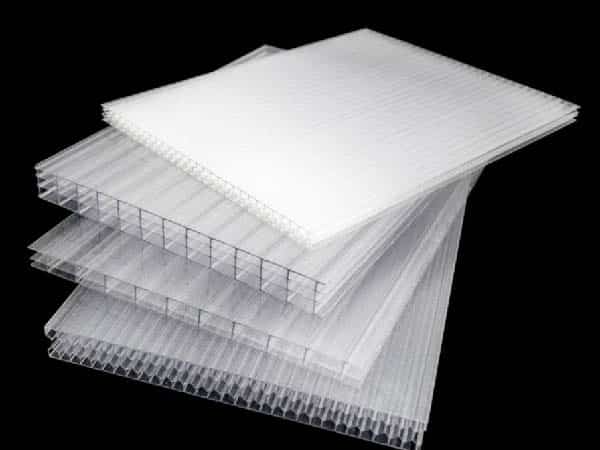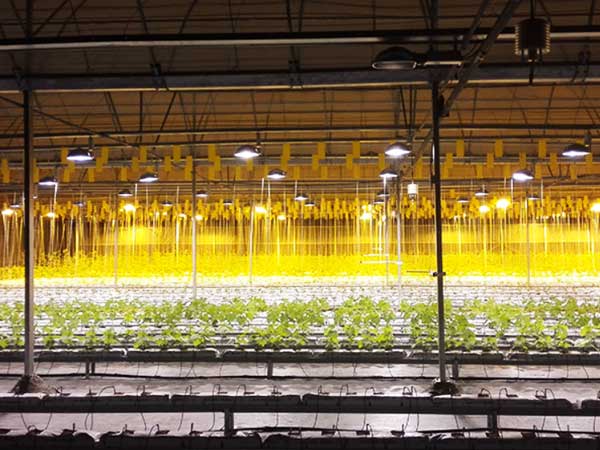Polyhouse farming is making waves in modern agriculture thanks to its affordability. It’s particularly appealing in developing countries like China, India, and parts of the Middle East and Africa. These commercial greenhouses, with their plastic film cover, master the art of creating the perfect environment for plant growth. This is great news for crops like tomatoes that thrive under specific conditions. The benefits? Bigger yields, longer growing seasons, and fewer pests and diseases.
This guide dives into everything you need to know about the financials, yields, and methods of growing tomatoes in polyhouses.
Are you considering building a modern commercial greenhouse? Let us provide you with a quick quote to determine whether it’s the right move for your tomato venture.
Understanding the Costs of Tomato Cultivation in Polyhouses
Before jumping into polyhouse tomato farming, getting a handle on the costs is crucial. Several factors play a role here. Location matters greatly, affecting costs due to land prices, climate, and labor. The greenhouse’s size and type, plus your choice of climate control, shape your initial and ongoing expenses.
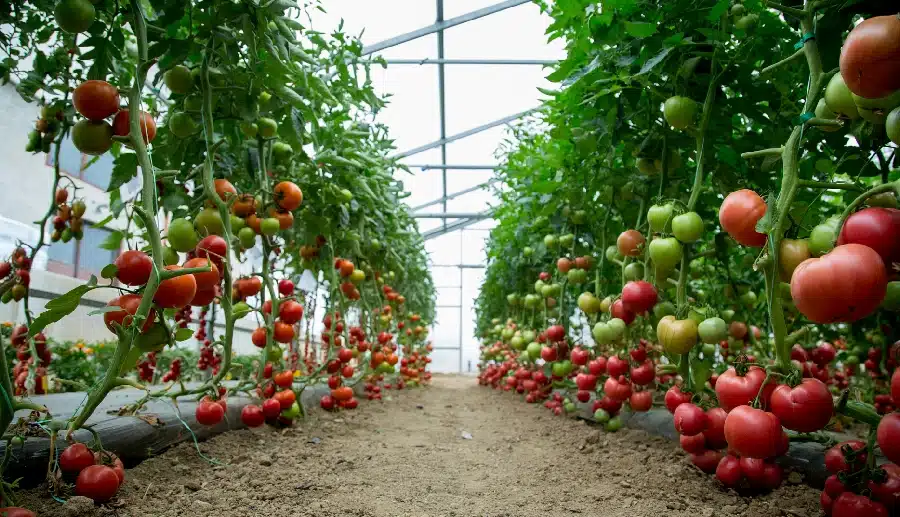
For example, in the US, setting up a commercial greenhouse costs between $15 and $35 per square foot. Your farming approach and crop cycle also influence the budget, dictating the resources you’ll need.
Let’s examine a 2013 Mississippi project report to get a clearer picture of what you might spend.
| Cost Category | Details | Example Data (Mississippi, 2013) |
| Initial Capital Investment | Cost to build a polyethylene-covered greenhouse, including coverings and structure. | $20,776 |
| Construction Costs | Depends on land prices and the choice of materials and equipment. Covers greenhouse framing, site prep, and utilities like water and gas. | Varies based on choices. |
| Annual Ownership Costs | Include costs like interest, depreciation, insurance, taxes, and fees, plus utilities and maintenance. | $6,396 |
| Direct Costs | The costs of growing tomatoes include seedlings, nutrients, and labor for planting, upkeep, and picking. They vary by season. | Spring: $2,866, Fall: $2,336, Continuous: $4,580 |
| Total Production Costs | The sum of direct and annual ownership costs, not counting the initial and construction costs. Shows the yearly cost for two seasonal crops or a year-round crop. | Two crops: $11,598, Continuous: $10,976 |
In the example discussed, growing tomatoes in a polyhouse involves key expenses: an upfront capital investment around $20,776 to build a 24×96 foot polyethylene-covered arch greenhouse; yearly costs of $6,396 for things like depreciation, insurance, and maintenance; and varying direct production costs—about $2,866 for spring, $2,336 for fall, and $4,580 for a year-round crop. Summing it up, the annual expense for two seasonal crops hits $11,598, whereas growing crops continuously costs slightly less, at $10,976.
Tomato Yield Per Acre in Polyhouses
Many factors influence tomato yield, including climate, soil quality, water management, variety selection, pest and disease control, and the use of agricultural technology. According to Our World in Data, global yields per hectare in 2022 ranged from less than 10 tons per hectare (approximately 4 tons per acre or 8,000 pounds per acre) in traditional open-field farming to over 200 tons per hectare (approximately 80 tons per acre or 1,60,000 lbs per acre) in advanced greenhouse farming systems.
However, on a broader scale, from 1961 to 2022, global tomato yields per hectare have steadily increased due to technological advancements and improved farming practices.
For instance, land-scarce developed countries like those in Western Europe often use greenhouse and indoor or vertical farming technology, achieving yields of over 200 tons per hectare (approximately 80 tons per acre or 1,60,000 lbs per acre). In contrast, less developed areas employing traditional open-field farming, such as African regions, might see yields of less than 10 tons per hectare (4 tons per acre or 8000 pounds per acre).
Advanced greenhouse systems can boost yields even in limited land situations. Skilled greenhouse growers can produce around 40 kg per square meter (400 tons per hectare, 160 tons per acre, or 320,000 lbs per acre). Vertical farming, which makes better use of space, can even push yields to over 100 kg per square meter (1,000 tons per hectare, 400 tons per acre, or 800,000 lbs per acre).
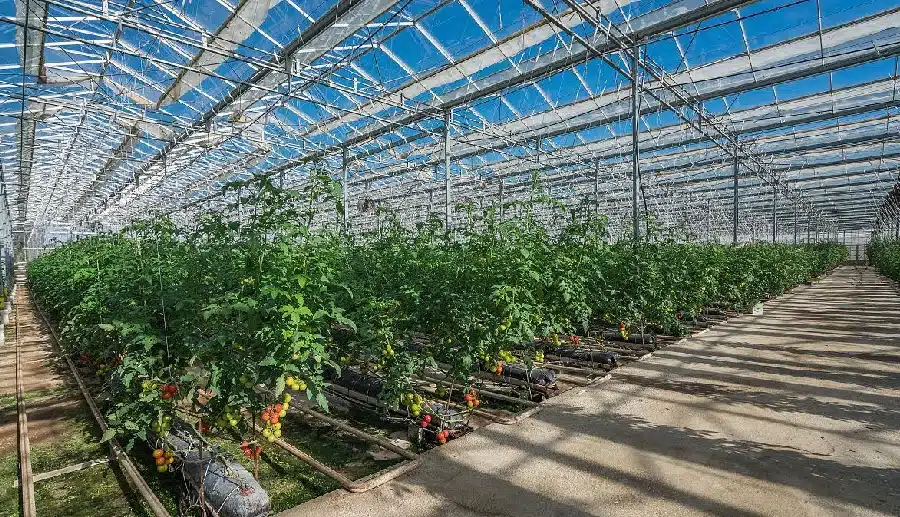
Tomato Cultivation Techniques in Polyhouses
When growing tomatoes in greenhouses, paying attention to several key issues is crucial for crop health and yield. Choosing the right greenhouse structure is the first critical step, as it directly affects creating an ideal growth environment for tomatoes. However, a good structure alone isn’t enough. A precise environmental control system is equally important to maintain optimal temperature, humidity, and lighting.
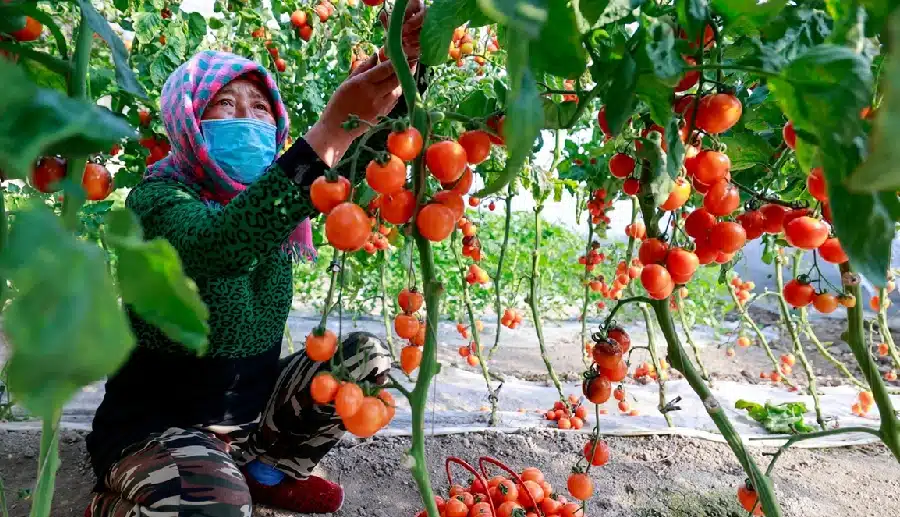
Moreover, scientific planting management, such as proper planting times, density control, timely fertilization, and irrigation, are decisive factors in improving yield and fruit quality. Effective pest and disease management strategies are also essential for protecting crops and minimizing losses.
Finally, carefully planned harvesting and marketing strategies ensure that produce reaches the market at the best time and condition, maximizing economic benefits.
Polyhouse Tomato Cultivation Handbooks
To help you navigate and address these challenges, we’ve compiled a selection of valuable resources. These include manuals and PDF guides packed with detailed technical insights and practical tips to refine your cultivation strategies and boost the yield and quality of greenhouse tomatoes.
- Greenhouse Tomato Handbook – Mississippi State Extension Service
- Greenhouse Tomato Handbook – UMass Amherst
- Production of Greenhouse Tomatoes – Ask IFAS
- Commercial Tomato Production Handbook – UGA Extension
Conclusion
In summary, greenhouse farming of tomatoes, by harnessing advanced technologies and best practices, allows growers to achieve significant yields that outpace traditional farming in both volume and quality. Greenhouse agriculture effectively tackles the challenges posed by climate change and limited land availability, enabling all-year-round tomato production to ensure a consistent supply.
Continuous innovation and improvements in greenhouse technology promise a more sustainable future for tomato farming, benefiting producers and consumers alike. This article aims to enhance your understanding of greenhouse tomato cultivation. If you’re exploring the option of setting up a commercial greenhouse, we’re here to provide quick estimates. Don’t hesitate to contact us!

